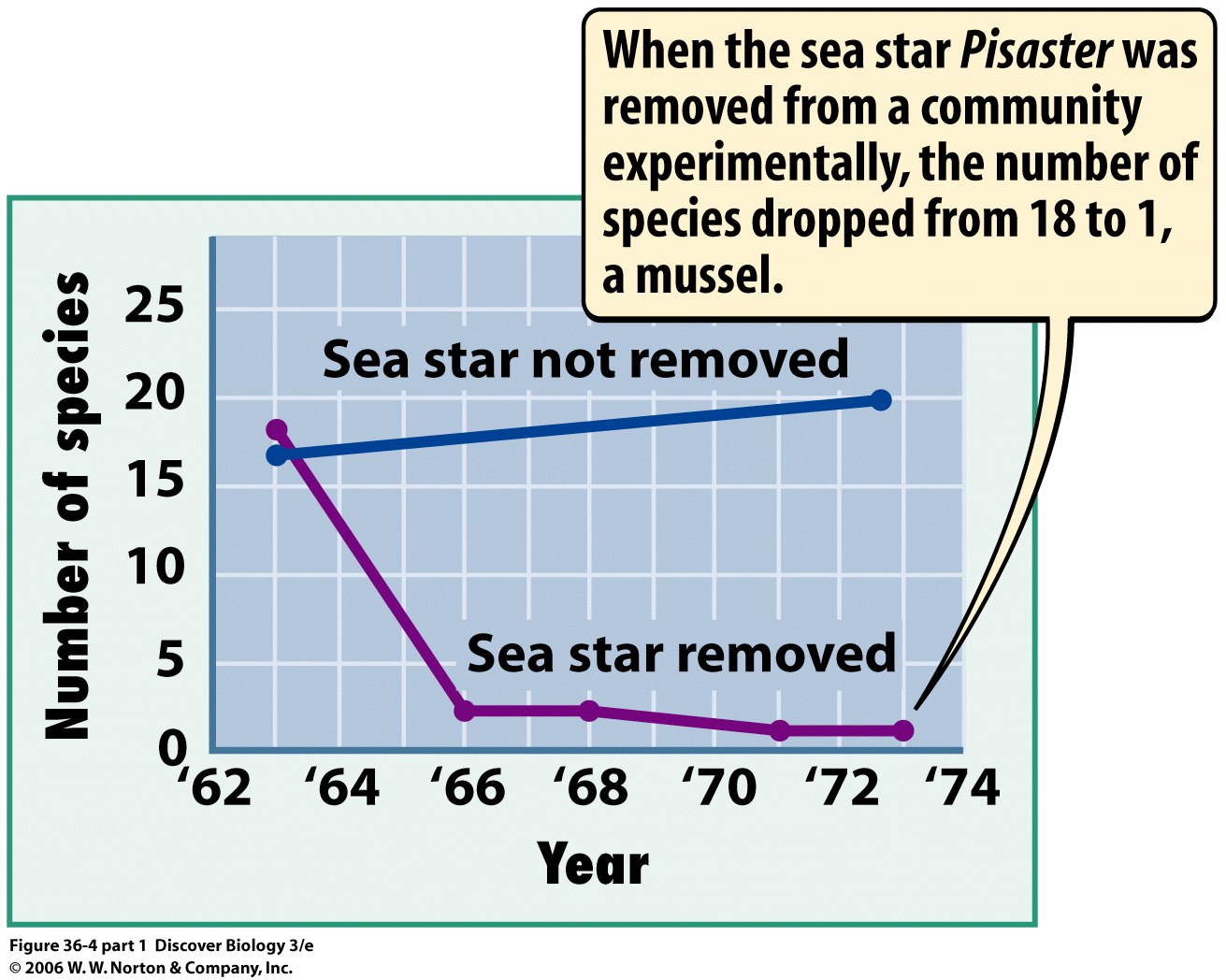
BIO 7: Lecture 25 Preview
Keystone Species are those that have a large effect on other species in a community.

Community interactions + changes in climate often result in community successions, where the populations and physical environment become more suitable for other species and one community is replaced by another. This takes hundreds of years.
You may get a better understanding of the change over time by viewing a stop-action animation 36.2 on your text's website.
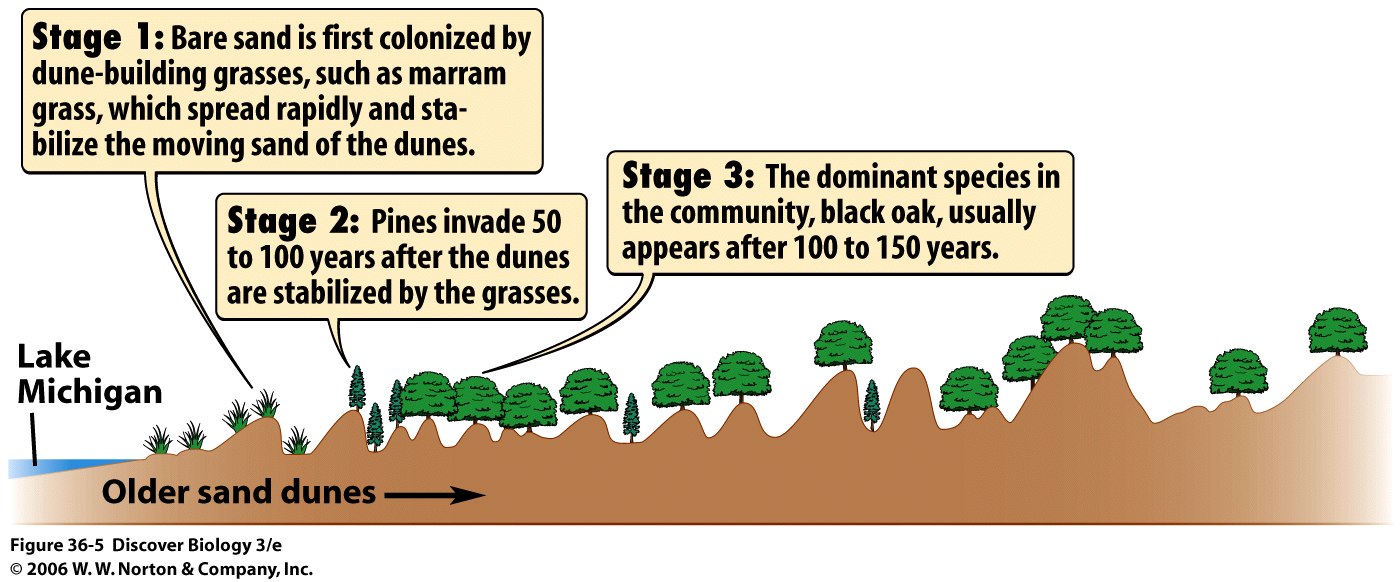
What are ways that the plants change the physical environment?
What are ways that animals change the physical environment?
What are ways that fungi and bacteria change the physical environment?
The final outcome in any given area depends on physical factors present for the long run, such as climate and soil type. Climatic factors like average temperature ranges and precipitation in each season affect how molecules in organisms can function and affect which organisms can survive. Areas with similar climates have similar looking communities and ecosystems. Types of ecosystems around the world have been characterized as biomes, based on climate, soil, and communities.
Similar biomes are found at similar latitudes and similar elevations.
Within every kind of ecosystem energy flows one way through the living things. It enters as light and exits as heat.
Matter cycles back and forth between biotic and abiotic parts of the ecosystem.
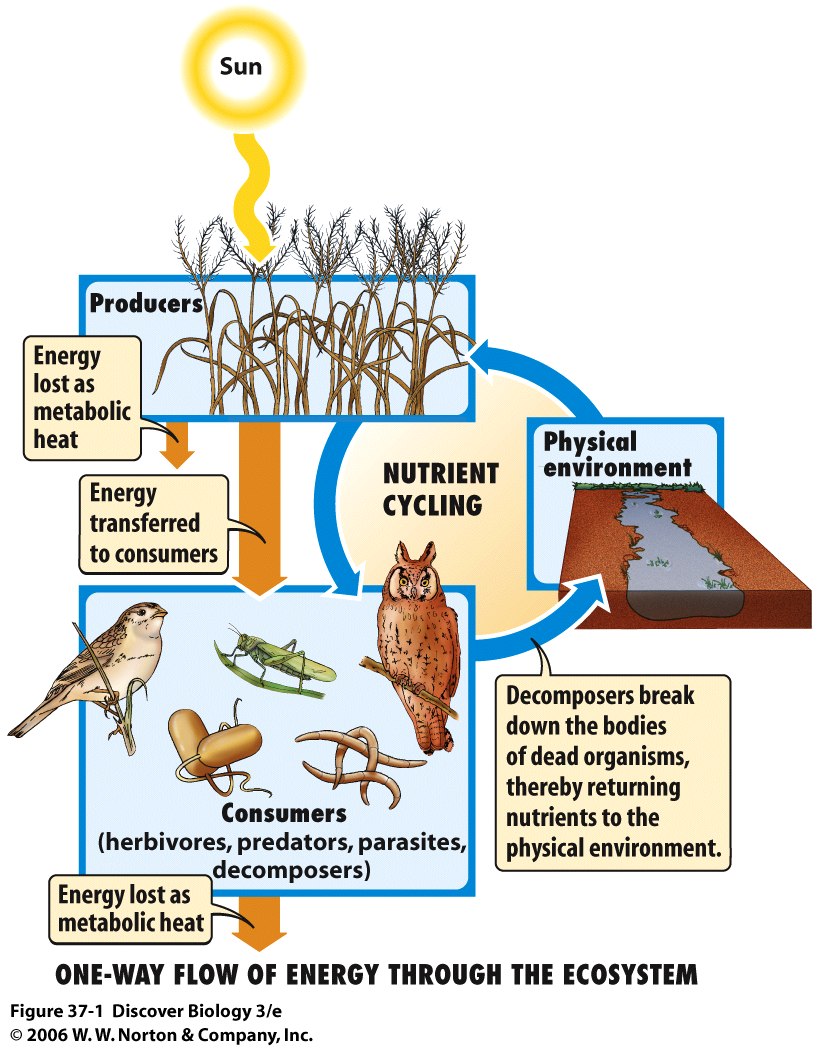
Remember that energy is not created or destroyed, but changed from one form to another. Living things get energy either by converting light energy to chemical energy in glucose or consuming chemical energy in organic molecules. Living things use energy to move themselves, build new molecules, move molecules in cells. With each energy use some energy is converted to heat, which cannot be used to move and build molecules.
Because some energy is lost as heat with energy use, only about 10% of the energy taken in by a trophic level is available for consumption by the next trophic level. Energy pyramids result.
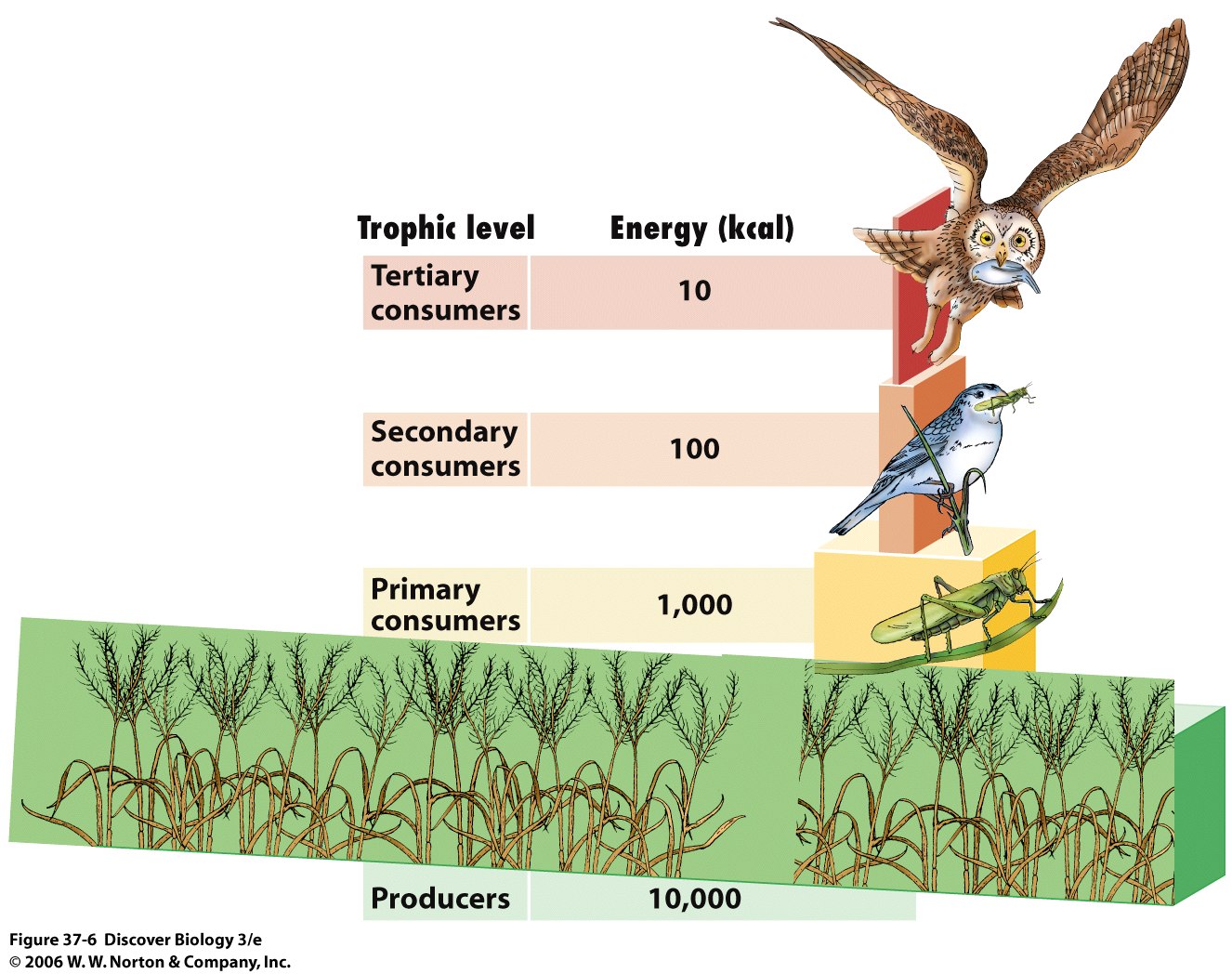
How would a producer use energy so that it would be edible by the next trophic level (available as food)?
How would a producer use energy so that it would not be edible by the next trophic level (not available as food)?
How would a primary consumer use energy so that it would be edible by the next trophic level?
How would a primary consumer use energy so that it would not be edible by the next trophic level?
Why are quaternary consumers (consumers of tertiary consumers) rarely found?
Within all kinds of ecosystem matter (atoms, ions, molecules) cycle through the living and non-living parts of the ecosystem. The cycles are called biogeochemical cycles. Humans have a large impact on the distribution of matter in these cycles.
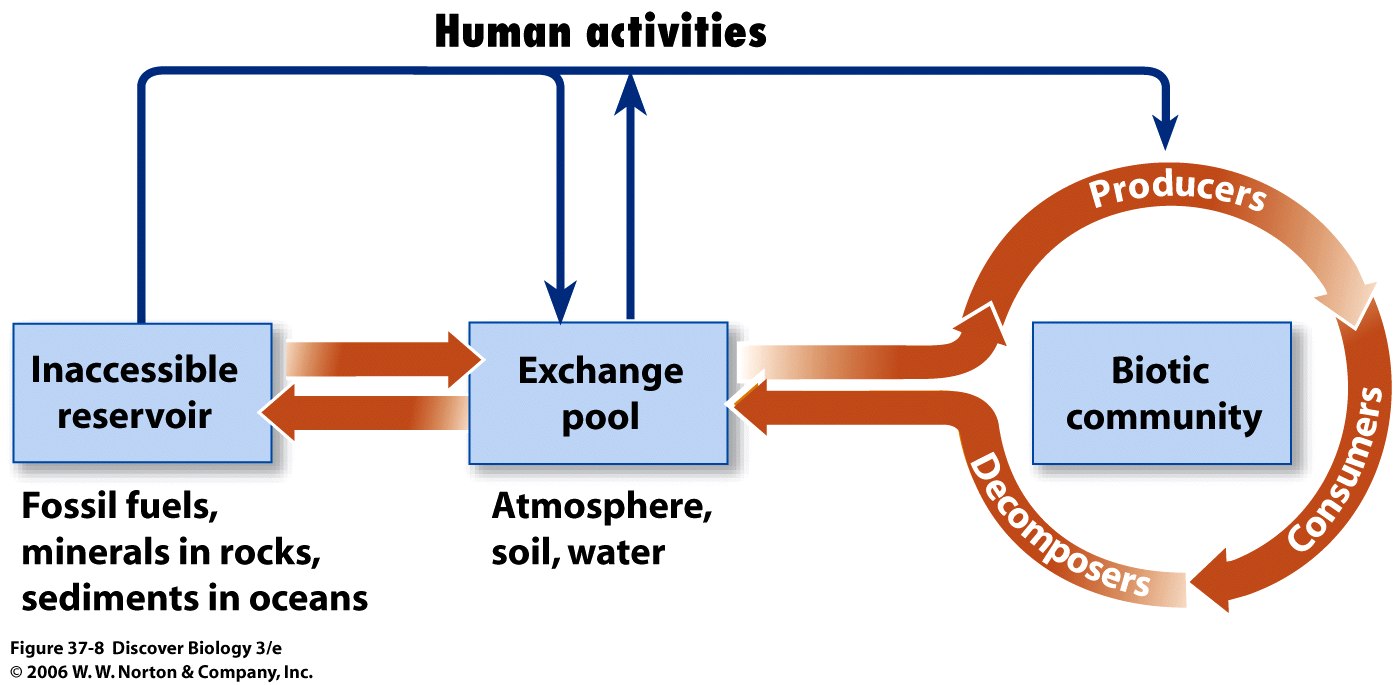
The carbon cycle is one kind of biogeochemical cycle.

What are the abiotic reservoirs of carbon in the ecosystem?
What are the biotic reservoirs of carbon in the ecosystem?
By what process does carbon move from the abiotic to the biotic reservoirs?
By what process does carbon move from the biotic to the abiotic reservoirs?
Too much carbon in the form of atmospheric carbon dioxide may be contributing to global warming. Atmospheric carbon dioxide prevents heat from leaving the surface of the earth, like a greenhouse traps heat in a garden. Ever left your car with the windows up on a sunny day?

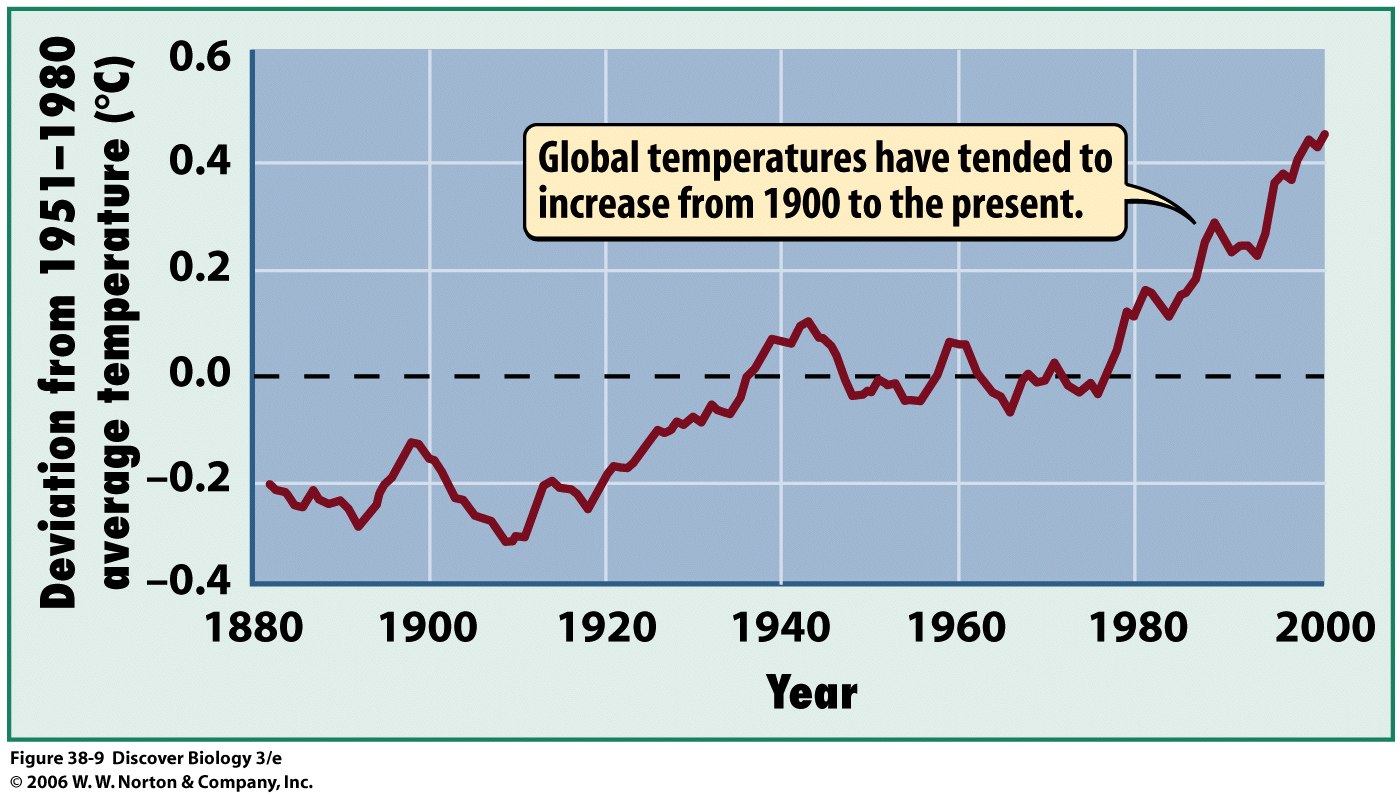
The water cycle is a biogeochemical cycle.
What are the abiotic reservoirs of water in the ecosystem?
What are the biotic reservoirs of water in the ecosystem?
By what process does water move from the abiotic to the biotic reservoirs?
By what process does water move from the biotic to the abiotic reservoirs?